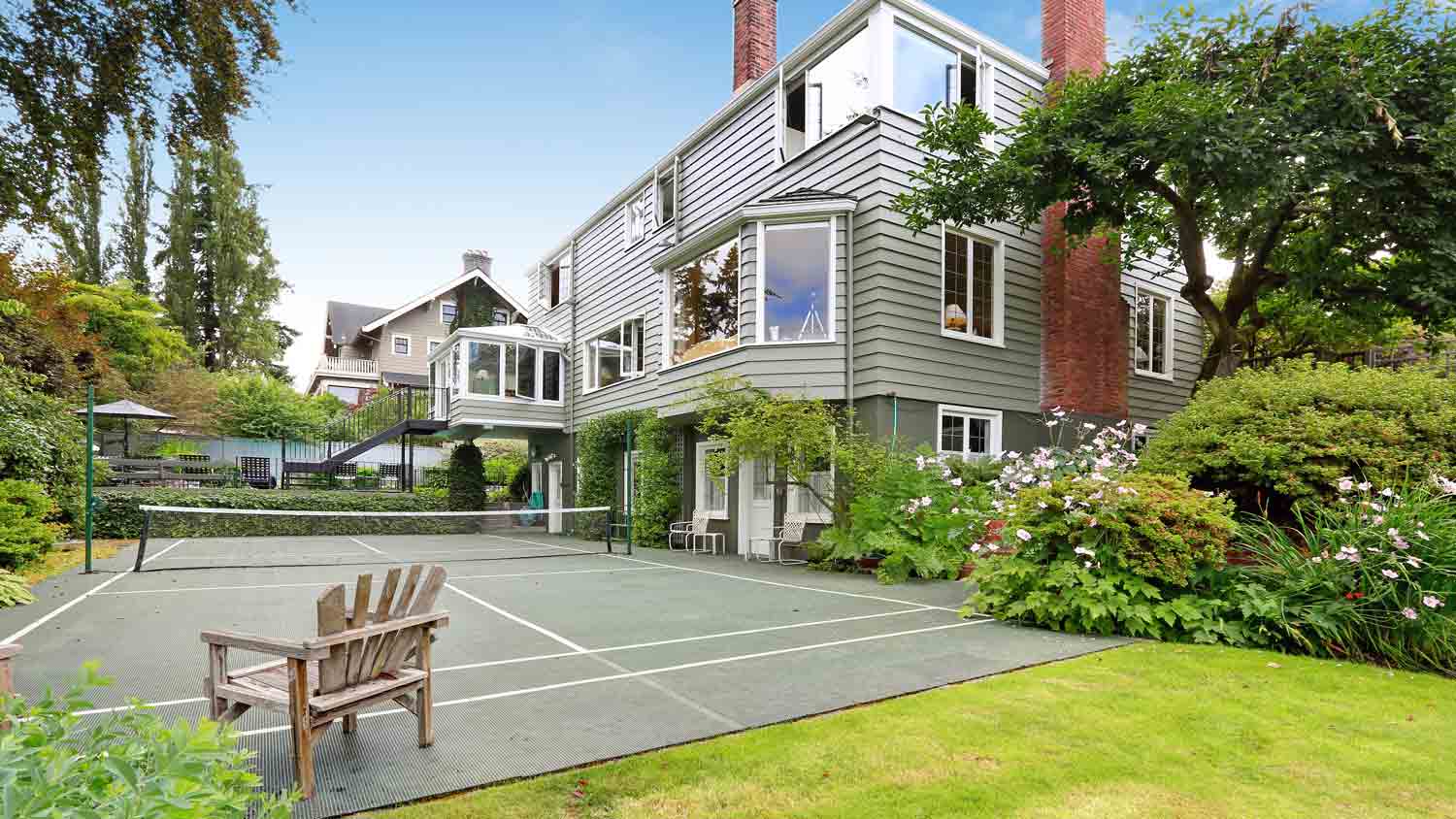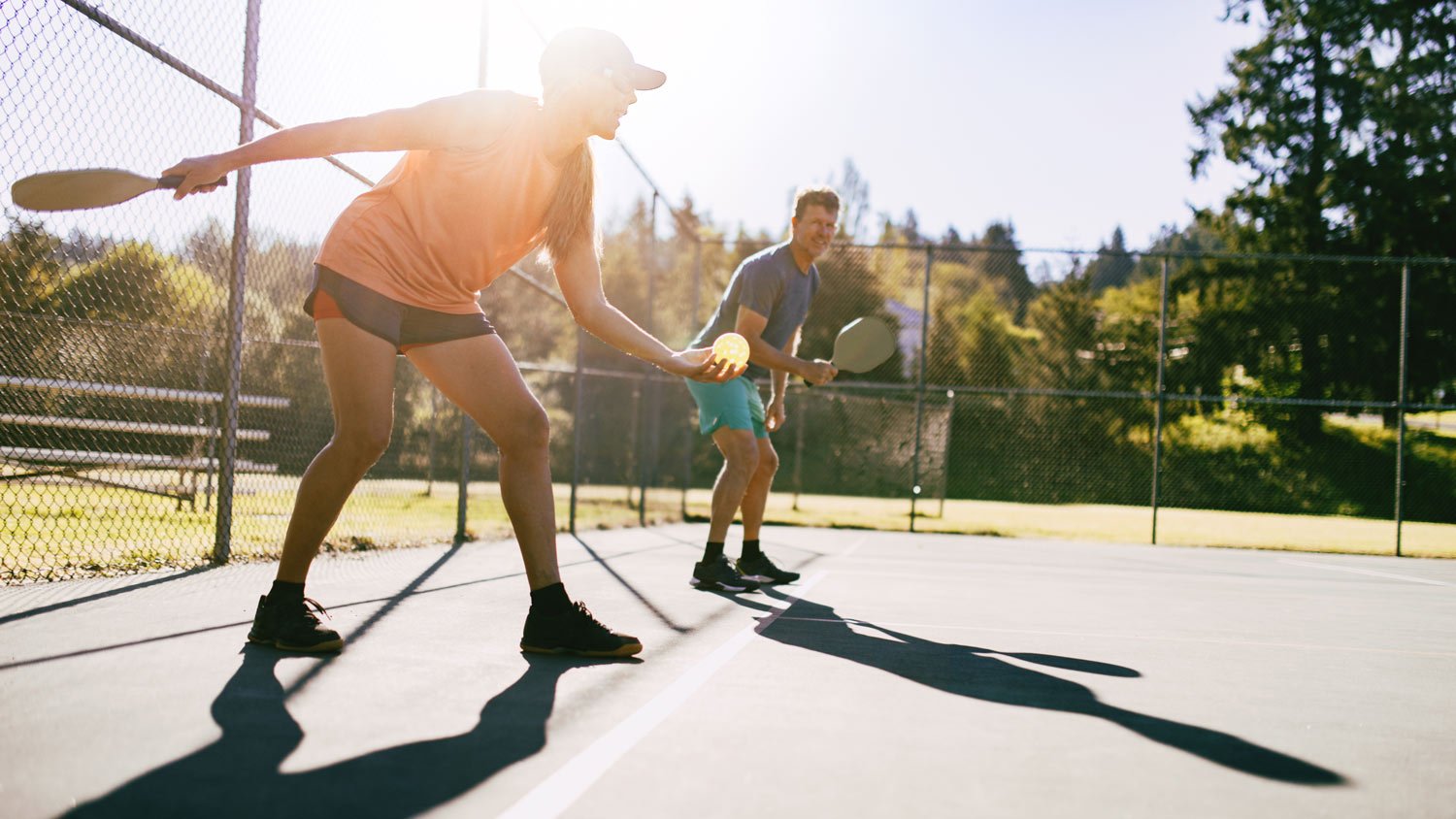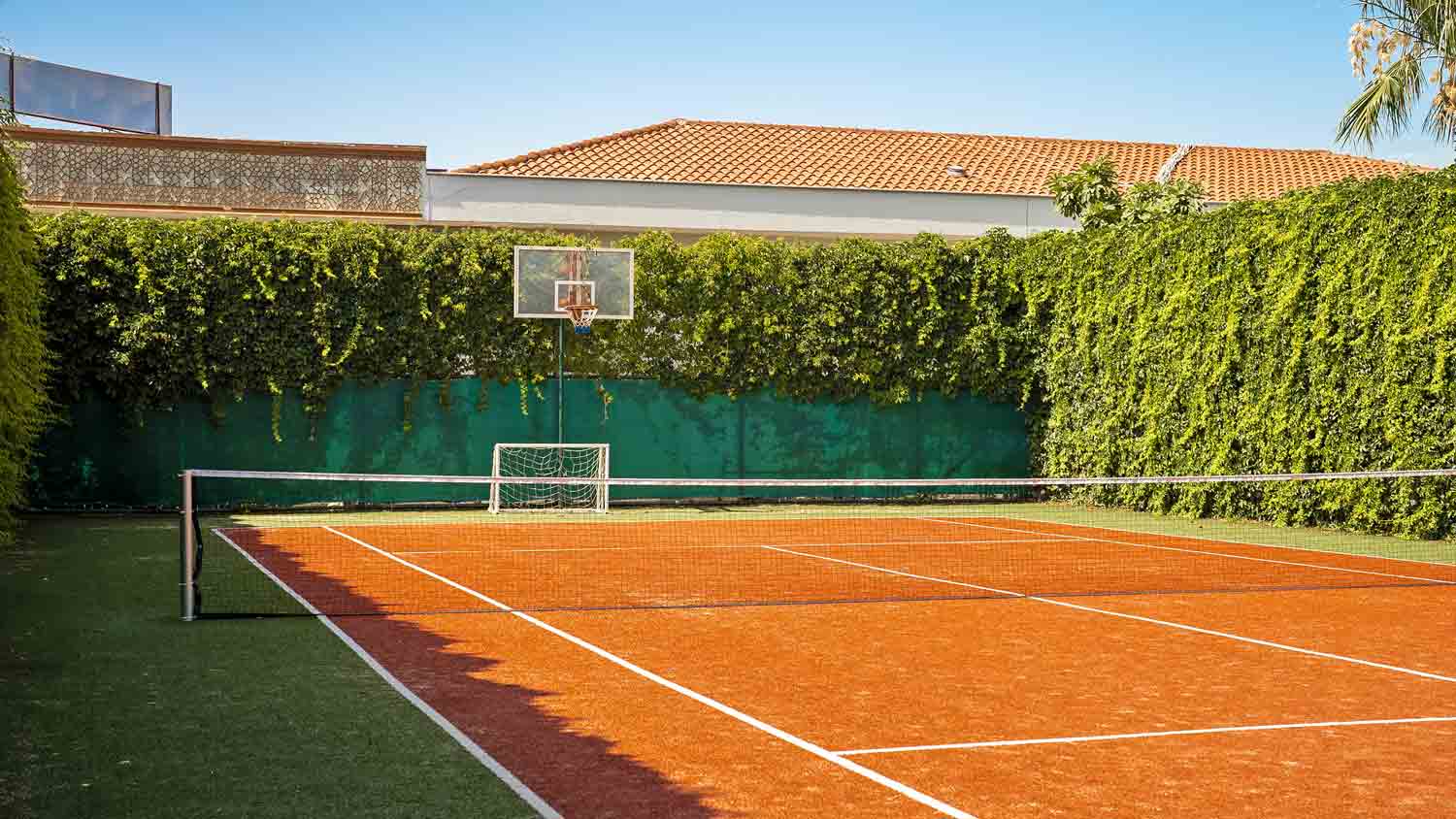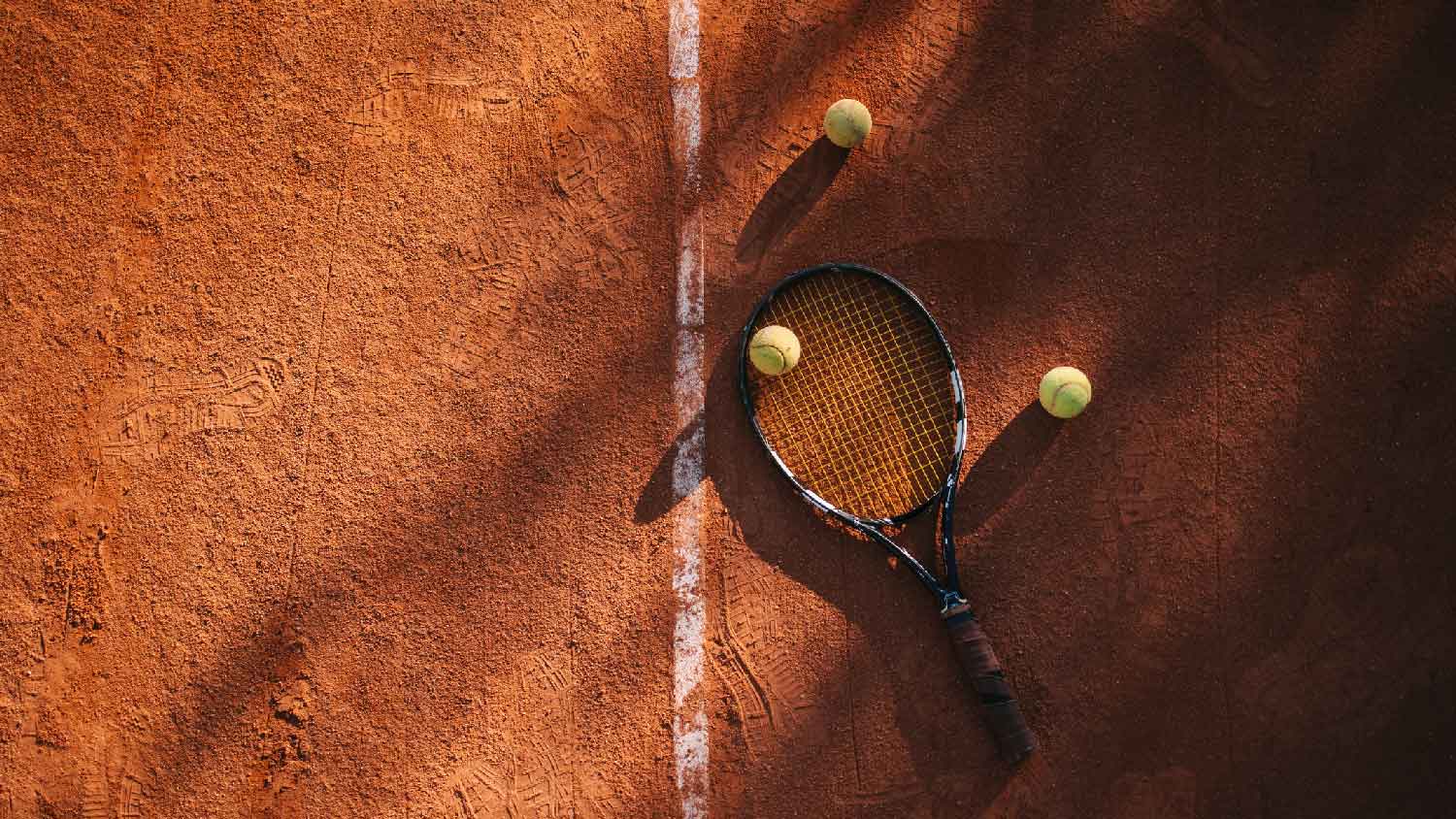
Discover how much it costs to build a pickleball court, including average prices, key cost factors, and tips to help you plan your project with confidence.
Backyard multi-sport court cost average $40,000, with most homeowners paying between $20,000 and $70,000. Your price depends on the court size, surface material, and any additional features.


Court size and surface material are the primary cost drivers for the cost of a backyard multi-sport court.
Custom features, such as lighting and fencing, can increase the total price by up to $12,000.
Professional court installation ranges from $3 to $10 per square foot, ensuring safety and long-term durability for your backyard court.
Your chosen material affects the final price, with options ranging from $10 to $20 per square foot.
A backyard multi-sport court can boost home value and family fun, offering an ROI of 30% to 50%.
This article was created using automation technology and thoroughly fact-checked and edited by an Angi Editor in accordance with our AI policy.
The average cost of a backyard multi-sport court is $40,000, with most homeowners spending between $20,000 and $70,000. Costs can be as low as $10,000 for a basic half-court or over $120,000 for a large, fully customized court. Expect to pay between $15 and $40 per square foot, depending on the materials and features.
Adding a multi-sport court is a big decision for any homeowner. This guide will help you understand what affects the price, how to plan your project, and what to expect so you can make the right investment for your family and property.
The size of your backyard multi-sport court is the single most significant factor in determining the cost. Larger courts require more materials, labor, and site preparation.
Common sizes include half-courts for basketball (30 feet by 30 feet), mid-sized multi-sport layouts (30 feet by 50 feet), and full-size courts (up to 60 feet by 120 feet). The number of sports you want to support—such as basketball, tennis, pickleball, or volleyball—will influence the required square footage and, in turn, the total price.
Homeowners should consider available backyard space, local zoning rules, and required setbacks before finalizing court dimensions. In general, the more sports and features you add, the more space and budget you’ll need.
| Court Size (Ft.) | Description | Average Cost | Cost Range |
|---|---|---|---|
| 30x30 | Half-court basketball | $15,000 | $10,000–$25,000 |
| 30x50 | Multi-sport, compact | $28,000 | $20,000–$40,000 |
| 60x120 | Full multi-sport | $70,000 | $50,000–$120,000 |
Choosing the right court type and surface is just as important as selecting the size. Modular tile, acrylic, concrete, asphalt, and synthetic turf are all popular options, each with its own impact on performance, maintenance, and cost.
Modular tile and acrylic are often chosen for multi-sport play thanks to their versatility and lower maintenance needs, while concrete and asphalt offer durability at a lower upfront price. Branded systems like Sport Court® or VersaCourt can add value and uniformity, but generic installations may be more budget-friendly.
Surface choice also affects installation time and the court’s long-term value. For example, acrylic surfaces need periodic resurfacing, while modular tiles are easier to replace if damaged.
| Court Type | Description | Average Cost per Sq. Ft. | Pros | Cons |
|---|---|---|---|---|
| Modular tile | Interlocking, cushioned tiles | $18 | Fast install, low maintenance | Higher upfront cost |
| Acrylic | Poured/sprayed sports surface | $15 | Smooth play, customizable | Needs resurfacing every 5–10 years |
| Concrete | Solid slab, painted or coated | $12 | Durable, affordable | Hard surface, cracks over time |
| Asphalt | Paved blacktop, painted lines | $10 | Lowest initial cost | Fades, cracks, and higher maintenance |
| Synthetic turf | Grass-like, multi-use | $20 | Soft, versatile for many sports | Expensive, may need infill replacement |
Where you live has a significant impact on the cost of a backyard multi-sport court. Urban areas tend to have higher labor rates and material costs, while rural locations may face increased delivery fees or limited contractor availability.
Climate is another factor—courts in regions with freeze-thaw cycles or heavy rainfall may require additional drainage or special surfaces. Local regulations, zoning, and permitting requirements can also add to your timeline and budget.
Site-specific factors, such as a sloped yard, poor drainage, or limited access for construction equipment, can further influence pricing.
Understanding what goes into the cost of your backyard multi-sport court will help you budget confidently. Here’s what affects your final price:
Professional installation requires experienced court installers, general contractors, and sometimes landscapers. Labor is quoted per project or by the square foot, with rates ranging from $3 to $10 per square foot, depending on the region and complexity. Urban areas and custom courts may see higher labor costs. More complex designs, site challenges, and special features (such as custom drainage or advanced surfacing) increase labor costs.
Most municipalities require permits for installing backyard multi-sport courts. Permit fees range from $100 to $1,000, depending on your location and the size of your project. The process can take several days to a few weeks and may require inspections before and after construction. Compliance with local codes, including setback requirements and drainage regulations, is essential to avoid costly delays.
Optional upgrades can significantly increase your total cost. Lighting systems range from $2,000 to $7,000, fencing costs $3,000 to $12,000, and net systems or rebounders range from $500 to $2,500. Custom striping, logos, ball containment nets, benches, and storage solutions also add to the price. Integrating lines for multiple sports and installing accessory equipment will increase both material and labor costs.
Project complexity impacts the overall price of building a backyard multi-sport court. Integrating multiple sports, custom shapes, or advanced drainage solutions all add to labor and material costs. Accessibility issues—such as tight spaces, limited equipment access, or distance from utilities—can require extra work and increase delivery fees.
Site preparation, including excavation, grading, or removal of old landscaping, is another key expense. Don’t forget post-construction cleanup, debris removal, and possible design or engineering fees for custom courts. Inspection costs may also apply before and after installation.
Beyond installation, there are ongoing and one-time costs homeowners should factor into their budget.
Manufacturers and installers often offer warranties covering materials, workmanship, or surface systems. Standard warranties last from one to 10 years, but some premium systems provide extended coverage for an additional cost. Upgrading to a longer warranty increases initial expenses but can save money on future repairs.
Running a backyard multi-sport court brings recurring expenses. Expect to pay for electricity to power lighting, water for cleaning, and occasional equipment replacement. Seasonal costs may include snow removal or protective coverings for certain surfaces.
Routine maintenance helps extend the lifespan of your court. Tasks include cleaning, line repainting, and periodic resurfacing (especially for acrylic or asphalt courts). Annual maintenance averages $300 to $900, while resurfacing costs $4,000 to $15,000 every five to 10 years, depending on court type.
Sales tax applies to materials and installation services in many states. Adding a court may also affect your property taxes, as local assessors can count it as an improvement that increases your home’s value.
A backyard multi-sport court can raise your homeowner’s insurance premiums, especially if you install lighting, fencing, or other high-value features. Liability coverage is recommended to protect against injuries that may occur during play. Speak with your insurance provider to ensure your policy covers court-related risks.
Over time, your court may develop cracks, faded lines, drainage issues, or worn surfaces. Minor repairs—such as patching cracks or repainting lines—can cost $500 to $3,000. More extensive repairs, such as resurfacing or fixing drainage, cost between $4,000 and $15,000.
If your court is older, out of warranty, or the repair costs approach 50% of the cost of a complete replacement, it’s best to consider a new installation. Modular tile and acrylic courts last 20 to 30 years with proper care, but replacement is recommended when the surface is unsafe or beyond repair.
Installing a backyard multi-sport court can offer a solid return on investment. Many homeowners experience increased home value, especially in family-oriented neighborhoods or areas where sports amenities are in high demand. ROI varies, but a well-designed court can recoup 30% to 50% of its cost at resale. Compared to pools or elaborate landscaping, courts are often easier to maintain and appeal to a wide range of buyers.
Non-monetary benefits include improved family recreation, health, and social opportunities. Quality, customization, neighborhood trends, and buyer demand all affect ROI. Safety, efficient design, and universal access make your court more attractive and valuable.
To keep your backyard multi-sport court within budget, consider the following tips:
Obtain multiple quotes from reputable installers for the best pricing.
Choose standard court sizes and surfaces to minimize custom costs.
Opt for phased installation—add features like lighting or fencing later.
Perform site prep or demolition work yourself if feasible.
Select durable, low-maintenance materials to reduce long-term expenses.
Schedule installation during off-peak seasons for potential discounts.
Reuse existing flat surfaces or repurpose old courts when possible.
DIY projects save on labor but require significant time, effort, and expertise. Materials and equipment rental for a DIY court range from $10,000 to $30,000. However, mistakes in site prep, drainage, or surfacing can lead to costly repairs or safety issues. Local court professionals charge more but deliver expertise, faster timelines, and warranty coverage.
Installing a backyard multi-sport court requires advanced equipment, tools, and techniques. Here’s why it’s best to hire a pro for the job:
Professionals know how to prevent common mistakes, such as cracking, uneven surfaces, or drainage issues.
Working with a reputable pro ensures compliance with local building codes and zoning regulations.
DIY mistakes can lead to uneven courts, surface damage, and costly repairs.
Experts know how to complete the job safely and efficiently, minimizing downtime and risks.
A professionally installed court can enhance curb appeal and increase property value.
If you want to help out with the installation process, consider taking on the following tasks:
Clear the area of rocks, debris, and old landscaping.
Remove small shrubs or trees from the court zone.
Keep tools, materials, and equipment organized and easily accessible.
Sweep or clean the surface after installation.
Arrange furniture and sports supplies once installation is complete.
Identify the surface material, such as tile, concrete, or asphalt, that best suits your budget and vision.
Be prepared with the exact measurements of your court, the layout, and the features you want to incorporate.
Consider whether you want any add-ons, such as lighting systems or nets, and ask your professional about potential costs.
Leave room in your budget for unexpected labor fees, landscaping, or materials.
Home is the most important place on earth, which is why Angi has helped more than 150 million homeowners transform their houses into homes they adore. To help homeowners with their next project, Angi provides readers with the most accurate cost data and upholds strict editorial standards. We extensively research project costs to develop the pricing data you see, so you can make the best decisions for you and your home. We rely on reputable sources, including the U.S. Bureau of Labor Statistics, academic journals, market studies, and interviews with industry experts—all to ensure our prices reflect real-world projects.
Want to help us improve our cost data? Send us a recent project quote to [email protected]. Quotes and personal information will not be shared publicly.
From average costs to expert advice, get all the answers you need to get your job done.

Discover how much it costs to build a pickleball court, including average prices, key cost factors, and tips to help you plan your project with confidence.

Discover the cost to resurface a tennis court, including average prices, key cost factors, and tips to help you budget for your court resurfacing project.

Ready to step up your game? Use this indoor basketball court cost guide to get an idea of how much your project will cost based on size, materials, and more.

Size isn’t the only difference when comparing pickleball vs. tennis courts. Stay tuned to see how each court differs to help you pick the best court.

A tennis court’s size significantly affects gameplay. Use this guide to learn how to size your tennis court based on factors like space available and regulation requirements.

Debating between a pickleball court or a tennis court? Use this guide to learn all about the difference in sizes between these two courts and compare them based on factors like maintenance and longevity.